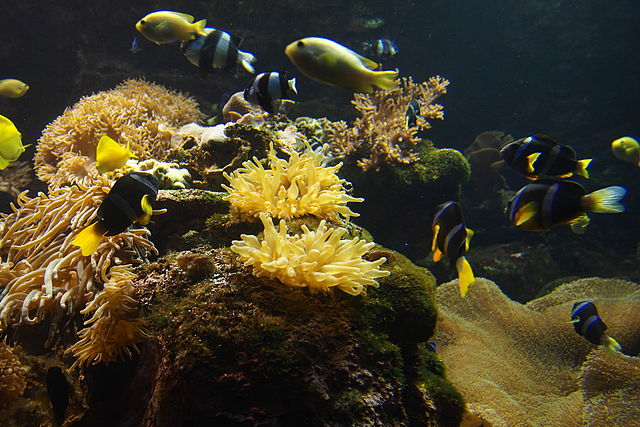Content deleted Content added
Line 30: The definition of life is controversial. The current definition is that [[organism]]s maintain [[homeostasis]], are composed of [[Cell (biology)|cells]], undergo [[metabolism]], can [[cell growth|grow]], [[Adaptation|adapt]] to their environment, respond to [[stimulus (physiology)|stimuli]], and [[reproduction|reproduce]]. However, many other biological definitions have been proposed, and there are some borderline cases of life, such as viruses. Throughout history, there have been many attempts to define what is meant by "life" and many theories on the properties and emergence of living things, such as [[materialism]], the belief that everything is made out of matter and that life is merely a complex form of it; [[hylomorphism]], the belief that all things are a combination of matter and form, and the form of a living thing is its soul; [[spontaneous generation]], the belief that life repeatedly emerges from non-life; and [[vitalism]], a now largely discredited hypothesis that living organisms possess a "life force" or "vital spark". Modern definitions are more complex, with input from a diversity of scientific disciplines. [[Biophysicists]] have proposed many definitions based on chemical [[systems]]; there are also some [[Living systems|living systems theories]], such as the [[Gaia hypothesis]], the idea that the [[Earth]] itself is alive. Another theory is that life is the property of [[ecological systems]], and yet another is elaborated in [[complex systems biology]], a branch or subfield of [[mathematical and theoretical biology|mathematical biology]]. [[Abiogenesis]] describes the natural process of life arising from non-living matter, such as simple [[organic compounds]]. Properties common to all organisms include the need for certain core [[chemical element]]s to sustain [[biochemical]] functions. Life on Earth [[Earliest known life forms|first appeared]] as early as 4.28 billion years ago, soon after [[Origin of water on Earth#Water in the development of Earth|ocean formation 4.41 billion years ago]], and not long after the [[Age of the Earth|formation of the Earth]] 4.54 billion years ago.<ref name="NAT-20170301" /><ref name="NYT-20170301" /><ref name="BBC-20170301" /><ref name="4.3b oldest" /> Earth's current life may have descended from an [[RNA world]], although [[RNA]]-based life may not have been the first. The mechanism by which [[abiogenesis|life began on Earth]] is unknown, though many hypotheses have been formulated and are often based on the [[Miller–Urey experiment]]. The [[earliest known life forms]] are microfossils of bacteria. Since its primordial beginnings, life on Earth has changed its environment on a [[geologic time scale]]. To survive in most [[ecosystem]]s, life must often adapt to a wide range of conditions. Some [[microorganism]]s, called [[extremophile]]s, thrive in physically or geochemically [[extreme environment]]s that are detrimental to most other life on Earth. [[Aristotle]] was the first person to [[taxonomy (biology)|classify]] organisms. Later, [[Carl Linnaeus]] introduced [[Linnean taxonomy|his system]] of [[binomial nomenclature]] for the classification of [[species]]. Eventually new groups and categories of life were discovered, such as [[cells]] and [[microorganisms]], forcing dramatic revisions of the structure of relationships between living organisms. Cells are sometimes considered the smallest units and "building blocks" of life. There are two kinds of cells, [[prokaryote|prokaryotic]] and [[eukaryote|eukaryotic]], both of which consist of [[cytoplasm]] enclosed within a [[membrane]] and contain many [[biomolecules]] such as [[proteins]] and [[nucleic acid]]s. Cells reproduce through a process of [[cell division]], in which the parent cell divides into two or more daughter cells. | |||
 Article Images
Article Images